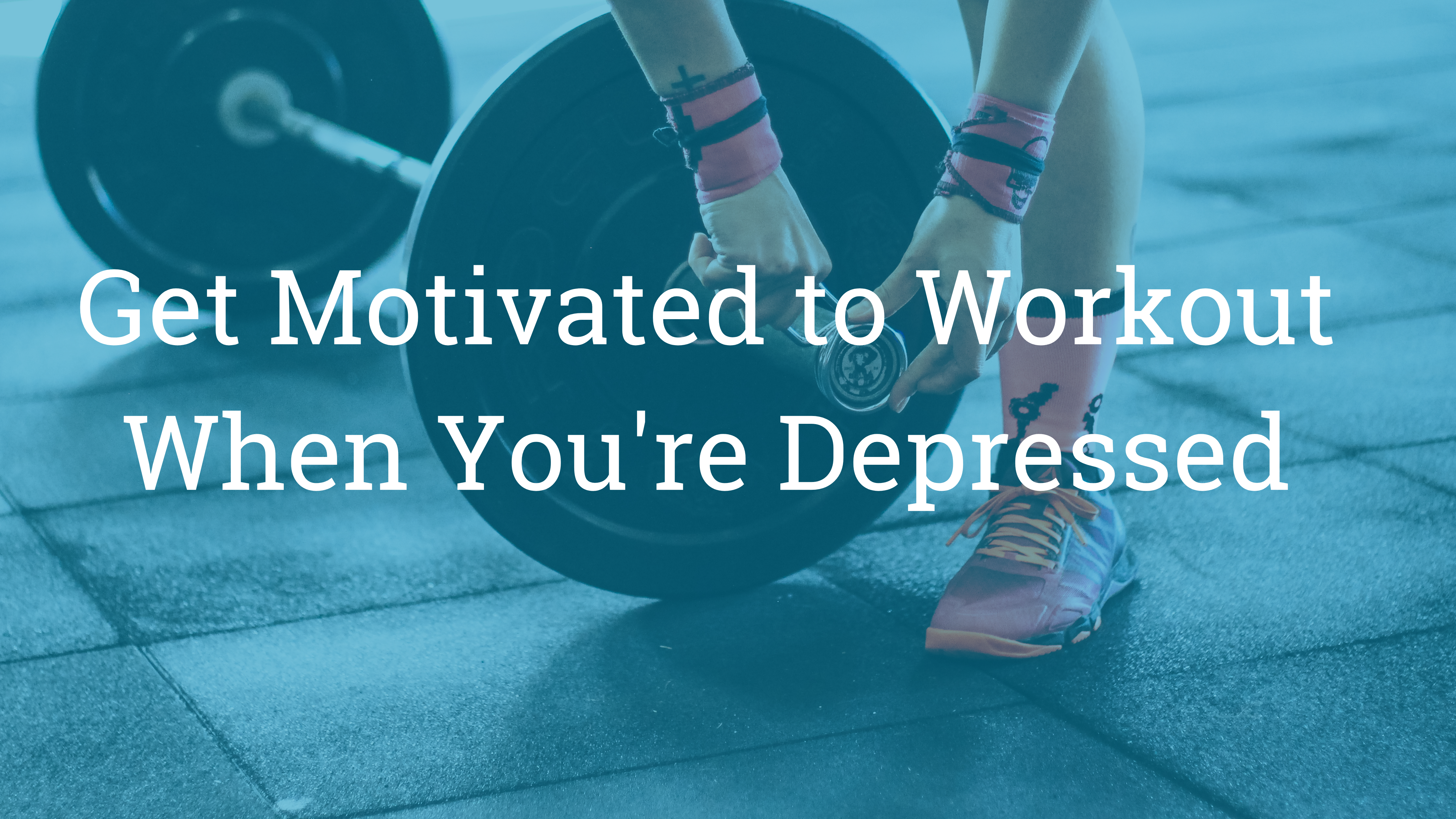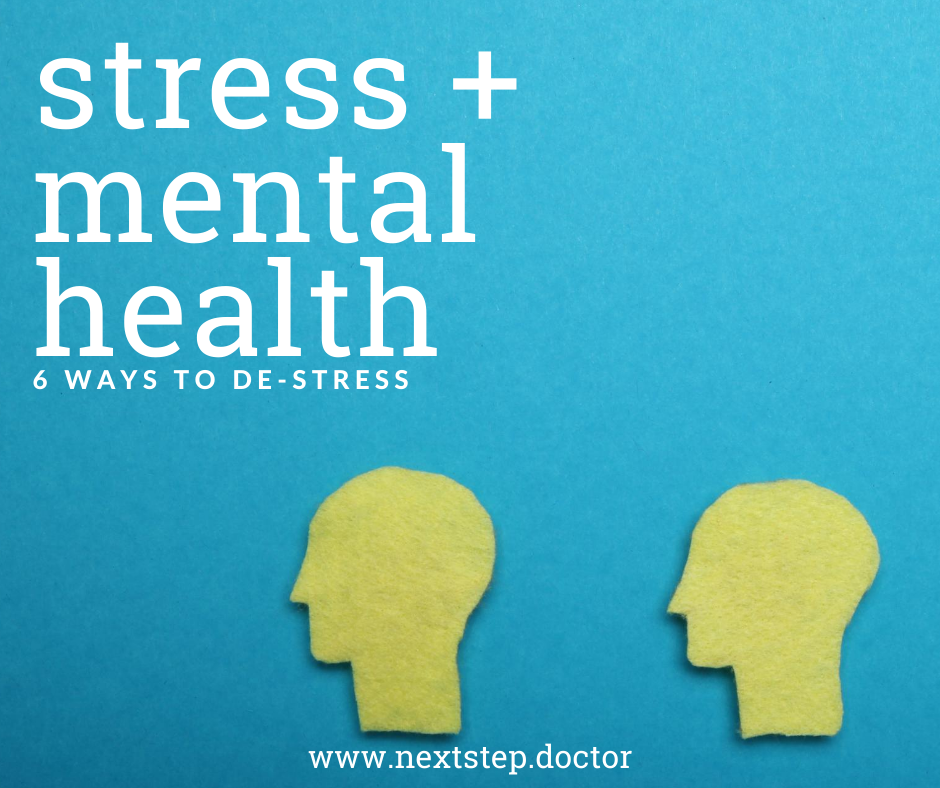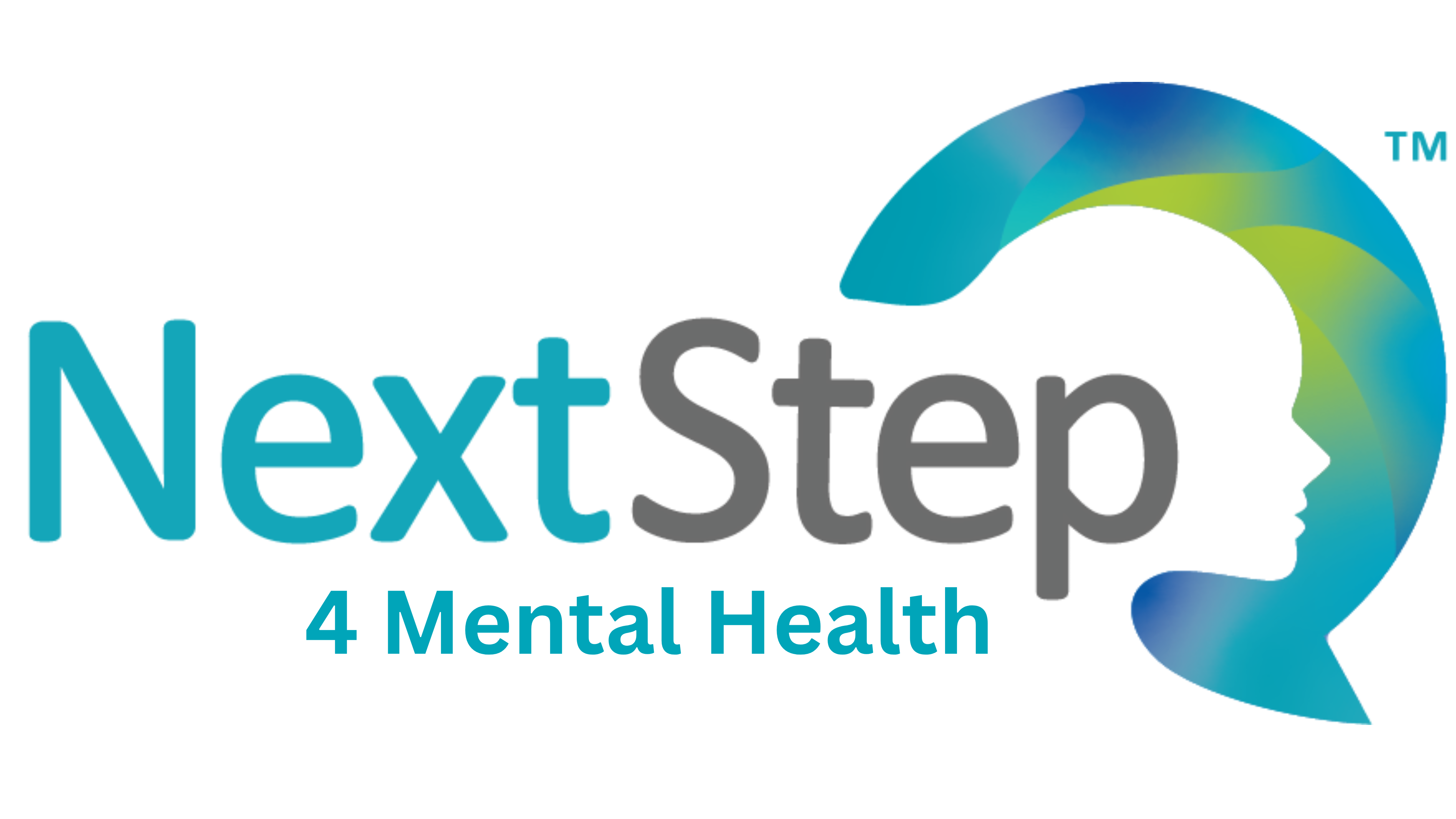
9 New Year’s Resolutions that Put Your Mental Health First
2021 is right around the corner … finally! Are you making resolutions this year? Here are nine New Year’s Resolutions that put your mental health first.
Catch Your Zzz’s
It’s no secret that getting enough sleep supports your physical well-being, but it also affects your mental health too. Insufficient sleep can increase your risk of a number of unfavorable conditions, including heart disease, type 2 diabetes, and depression. Some psychiatric conditions (including bipolar disorder, anxiety disorders, and depression) can cause sleep problems. In addition, insufficient sleep can even exacerbate the symptoms of many mental conditions including depression, anxiety disorders, and bipolar disorder.
So how much sleep do you need? It depends on your age. The National Sleep Foundation suggests the following:
| Your Age | Recommended Hours of Sleep from the NSF | |
|---|---|---|
| Newborn | 0–3 months | 14–17 hours |
| Infant | 4–12 months | 12–16 hours |
| Toddler | 1–2 years | 11–14 hours |
| Preschool | 3–5 years | 10–13 hours |
| Elementary School Age | 6–12 years | 9–12 hours |
| Teen | 13–18 years | 8–10 |
| Adult | 18–60 years | 7–9 hours |
| 61–64 years | 7–9 hours | |
| 65 years and older | 7–8 hours | |
If you make “practice better sleep hygiene” as one of your New Year’s resolutions, here are a few tips you can use to help you accomplish this:
- Try to go to bed at the same time every night
- Avoid blue lights for 1-2 hours before bed (You can learn more about warm lights in this post: Do Warm Lights Help You Sleep Better?)
- Sleep in a cool, dark room (cool refers to a few degrees cooler than room temperature)
- Exercise during the day
- Spend some time in the sunshine (it helps to reset your circadian rhythm)
Exercise More

Exercise not only helps you sleep better at night, but it also supports your mental health in other ways too. Studies show that aerobic exercises help to reduce symptoms of anxiety and depression. Exercise also:
- Boosts your mood
- Reduces stress
- Reduces the likelihood of social withdrawal
- Boosts self-confidence
Examples of aerobic exercise include running, jogging, dancing, walking, hiking, swimming, and playing tennis.
If you make “exercise more” as your resolution, remember that exercise regimens don’t have to be arduous. There are plenty of fun ways to add more physical activity into your daily routine. Even walking your dog an extra 10 minutes can add up over time.
Find a New Hobby
Did you know that hobbies are good for your mental health? According to the Australian Government Health Department, hobbies can boost self-confidence, promote feelings of relaxation, reduce stress, and improve overall happiness.
Here are a few examples of popular hobbies:
- Sports and exercise
- Music
- Art, including drawing, sculpting, painting
- Knitting and crocheting
- Baking
- Reading
- Journaling
- Gardening
- Fishing
You don’t need to be an expert to participate in a hobby. It’s about spending time doing an activity you enjoy.
Meditate
According to Mental Health America, meditating is great for your mental health. It can reduce stress, reduce the symptoms of anxiety and depression, and even help lessen chronic pain.
If “meditate more” is your resolution, you can find many ways to include more meditations into your weekly routine:
- Apps like Headspace
- Books
- Online guided meditations
Get a Planner
Getting organized can help you organize thoughts and reduce anxiety from last-minute scrambling or missed appointments. Keeping a planner can also support your mental health because you can stay on top of appointments, medication schedules, etc. Using a planner (either paper or through an app) can help you stay organized when your life — and health — feel overwhelming.
Volunteer
Did you know that volunteering also supports your mental health? According to the Mayo Clinic Health System, volunteering decreases the risk of depression.
If “volunteer more” is one of your New Year’s resolutions this year, you don’t even have to leave home. Here is a list of 20+ virtual volunteer opportunities.
Get Back to Nature

Spending time in nature can also support your mental health. Sunshine and fresh air can reset your circadian rhythm, which helps you get enough sleep. The experts at Harvard suggest that even 20 minutes spent outside can make a big difference.
If “spend time in nature” is one of your resolutions, read this article to explore a few ideas for spending time outside.
Develop an Attitude of Gratitude
Giving thanks and cultivating an attitude of gratitude can increase your happiness, according to the experts at Harvard.
If “be more thankful” is one of your New Year’s resolutions, you can boost your gratitude by writing more thank you notes, meditating, and keeping a gratitude journal (and re-reading on days you feel blue).
How to Keep a Gratitude Journal (for You and Your Kids!)
Keeping a gratitude journal is a great way to combat anxious thoughts. In fact, writing in a gratitude journal is shown to improve emotional resilience and reduce stress. There are many ways to keep a gratitude journal, but here are some tips:
- Journal first thing in the morning to start the day on a positive note
- End the day with a quick reflection about things you were grateful for over the course of the day
- If your child can’t write yet, she or he can draw pictures instead
You can download our free printable Gratitude Journal. Print out the journal and let your child explore the concept of gratitude. With 50+ pages, your child will have nearly two months of journaling!
Practice More Positive Self-Talk
How you talk to yourself matters, and incorporating more positive self-talk can make a big difference.
If “practice more positive self-talk” is one of your New Year’s resolutions, here are ten to get you started:
- I am capable and strong.
- Attempting to do X took courage, and I am proud of myself for trying.
- Even though this wasn’t the outcome I anticipated, I learned a lot about myself during this process.
- I am proud of how far I have already come even if I still have a ways to go.
- I can get through this.
- Tomorrow is another opportunity to try again, and I can utilize the lessons I learned from today.
- I will do my best.
- I can’t control what other people say, do, or think, but I can control my thoughts, words, and actions.
- This is an opportunity for me to try a new way to do X.
- I am learning from this situation, and I can grow as a person.
The Best New Year’s Resolution: Ask for Help When You Need It
Even with all of these resolutions, it’s not always enough. The best thing you can to do support your mental health is to ask for help if you need it. As a multidisciplinary practice, we can support a variety of mental health conditions with therapy, medication, lifestyle changes, coaching, and more.
Here at Next Step 2 Mental Health, we provide comprehensive mental health care for adults (and children too!). We’re just a call or click away. Call 502-339-2442 or send us a message to request more information.
Learn More
How to Get Yourself to Work Out When You’re Depressed
Whether you’re dealing with seasonal affective disorder, major depressive disorder, postpartum depression, or bipolar depression… it can be hard to motivate yourself to work out.
Yet…exercise is one of the best things you can do to support your health — and that includes your mental health too! But just knowing that exercise is good for you isn’t always enough to get the sneakers on, especially if you’re unmotivated. The truth is that no one is always excited about exercise 100% of the time —and that’s okay—but there are steps you can take if you find it hard to complete everyday tasks.
Depression can grow to be an all-encompassing condition that makes even daily tasks difficult. Depression can lead to indecision, which makes it hard to decide when to exercise or what type of exercise you want to try. Monica Clark, LPA, shares:
“Many people with depression will struggle to make [decisions]. For more complex decisions… a person with depression may feel paralyzed by an inability to decide. Difficulty making decisions may be related to either internal or external fears.”
If you or a loved one are battling depression—or even suspect you might be— our compassionate team here at Next Step 2 Mental Health encourages you to reach out for help. Professional mental healthcare providers can help you learn strategies to make a positive difference in your life, despite the all-consuming nature of depression.
In the meantime, keep reading to explore six strategies to boost your motivation.
Don’t Wait for Motivation
Depression can make even the smallest tasks, like showering, seem daunting. When it comes to exercise, don’t wait for a burst of motivation. Try reversing your thought process. Instead of saying, “I’ll go for a walk when I feel better” try thinking “I’ll go for a walk to help me feel better.” Over time, this will get easier.
You can also post a sticky note on your mirror or next to the couch to remind you to take your daily walk.
Eliminate Every Barrier Possible
If the idea of exercising seems impossible, chances are good that laying out workout clothes isn’t any easier.
In the absence of motivation, there are few things you can do to make this process easier:
- Keep your sneakers by the door and ready to go
- Plan a specific time for your daily walk
- Invite a friend or family member to join you (accountability)
- Go to bed in your workout clothes (so you’re ready first thing in the morning)
Start Small

Exercise doesn’t have to intense marathon training. Your body and your mind benefit from all kinds of physical activity. Even just the simple act of standing up and walking around the house for 10 minutes is a good place to start. Maybe just a walk with your dog around the block. Once you get up and moving, your endorphins start to pump, and you might find yourself wanting to do more. If not, and those laps around the house are all you do in a day, that’s still much better than nothing.
Walking can be very therapeutic. According to a study published in the Primary Care Companion to the Journal of Clinical Psychiatry, walking for 30 minutes per day for 10 days was enough for the study participants to notice a shift in their mood. You don’t have to walk on a treadmill though. You can walk outdoors and get the added benefit of sunshine — which can also boost your mood.
“Any physical activity is better than none,” certified health coach Pam Valdes reminds us.
Join an Exercise Program
According to researchers, individuals with depression who joined an aerobic exercise program experienced:
- Reduced feelings of anxiety
- Reduced depression symptoms
- Improved self-esteem
You can find a variety of aerobic exercise programs both in-person and online.
Recognize Negative Self-Talk
Sometimes negative self-talk can block your desire to work out, and unfortunately, negative self-talk is common among those with depression. However, if you learn to recognize negative thoughts and replace with neutral or positive thoughts to help you take your next step.
Here’s an example of what that might sound like:
- Negative self-talk: “I’m not good at lifting weights, so I won’t even try.”
- Neutral self-talk: “This is challenging, but that’s okay.”
- Positive self-talk: “I am strong, and each day, I continue to strengthen my muscles. I can do this.”
You can learn more about self-talk and depression in “Overcoming the Negative Self-Talk Cycles of Depression.”
Recognize Your Accomplishments
When you’re feeling depressed, any physical activity is a major win. Celebrate all of your accomplishments — big or small.
You might consider keeping a calendar and marking each day you exercise. Maybe you use a check mark, a gold star sticker, or the simple phrase, “I exercised today.” When you look back and see all of the days that did work out, it can boost positive feelings about yourself — and that can be a good motivator to keep it up.
You can also share your accomplishments with friends, family members, or any accountability/workout buddies.
When Depression Prevent Exercise: Find Treatment That Works
At Next Step, we know how profoundly depression can impact all aspects of your life. Our compassionate, non-judgmental team offers a variety of depression treatments, including medication and therapy.
If depression is keeping you from your potential, we can help. Call our Louisville, Kentucky office at 502-339-2442. You can also request an appointment online.
Learn More
11 Ways to Help Someone with Depression
If a family member or loved one has depression, you might wonder what you can do to help them feel better. You might even feel confused or worried for your loved one.
At Next Step 2 Mental Health, our team of caring providers wants you to know that depression is treatable. In this article, we’ll explore 11 ways you can help someone in your family with depression.
11 Ideas to Help a Loved One with Depression
It can be overwhelming to see a loved one struggle with the symptoms of depression, but here are 11 ways you can help.
1. Practice Self-Care … and Take Care of YOU

You’ve probably heard the phrase: “You can’t pour from an empty cup.” Before you can help your loved one, you have to take care of yourself too. That means your physical and mental health. If you’re burnt out, it can be hard to care for another person. Taking a step back to recharge yourself can give you the energy you need to care for a loved one.
Self-care ideas include:
- Eating nourishing meals
- Exercising regularly (read this article to find out how nature improves your mental health)
- Getting quality sleep (aim for at least 7-9 hours of sleep each night)
- Allotting time for your own favorite hobbies
- Reading a relaxing book
You can also encourage self-care habits for your entire family.
2. Acknowledge Your Own Feelings
Depression doesn’t just impact your loved one. It can affect your entire family. Caring for a spouse or teen with depression can be overwhelming. Don’t ignore your feelings. They are normal and valid. You can’t control what you feel, but do know that your feelings are a natural response to what can be a potentially overwhelming or difficult situation.
You may find it valuable to join a caretaker/family support group, talk with with your spouse (which is especially important if you are both caring for a child or teen with depression), or even see a therapist yourself. The important thing is to be open about your frustrations rather than keep them pent up inside.
3. Learn as Much as You Can About Depression
Depression is well-known for causing intense sadness, but that’s not the only symptom. Depression can affect people differently. Take the time to read about seasonal affective disorder, how depression physically affects the human body, and explore the lesser-known symptoms of depression.
You might notice any of the following in your loved one:
- Weight changes (either losing or gaining weight)
- Loss of interest in favorite hobbies
- Changes in eating habits (including eating more and eating less)
- Sleep disturbances and insomnia
- Sleeping too much or not enough
- Feeling guilty
- Feeling worthless
It’s also important to note that depression causes physical symptoms too. Your partner or teen might complain of headaches, muscle tension, and stomach pain.
Monica Clark, LPA elaborates: “Depression is not just in your head.” She continues to share that depression can cause real, tangible pain. Depression can alter the way your loved one experiences pain. It can decrease his/her pain tolerance.
4. Research Disability Laws and Rights
If your loved one can’t work due to depression, you might want to learn more about any pertinent disability laws. The American Disability Act (ADA) defines a disability as a physical or mental impairment that substantially limits a major life activity. Under this law, individuals have the right to privacy as well as the right to ask for reasonable accommodations.
5. Be Supportive

One of the most helpful things you can do is to let your loved one that you are there for them. Support – in the form of a listening ear or a shoulder to cry on – can be comforting
Be patient, but let your loved one know you are there for them in whatever way they need.
Depression is not their fault and it doesn’t make someone lazy, worthless, or weak. Don’t be afraid to ask how you can best help out. You’ll never know what a simple offer to help can do until you try.
6. Don’t Take Withdrawal Personally
People with depression may withdrawal or avoid social outings or events. Try not to take withdrawal personally. Withdrawal can be hurtful, especially if it’s your spouse that pulls away. Recall from your research on depression that loss of libido can be a sign of depression – and not a sign that something is wrong with you.
Withdrawal (or even an angry outburst) may have nothing to do with you.
7. Resist Nagging
Depression can cause fatigue and loss of interest in normal everyday routines. On the outside, it might look as if your loved one is lazy – especially if they stop helping out around the house. However, a person with depression isn’t lazy. They are struggling with a mental illness.
Try to remember that everyday activities – such as paying a bill or even feeding a beloved pet – can be very overwhelming for someone with depression.
Try not to blame your loved one – or yourself. There’s no shame in asking for help.
8. Learn about Depression Treatments
Although depression can be incapacitating, it can be treated with therapy, lifestyle changes, and medication. One easy way to help your loved one is learn about potential treatment options, including how depression medication works.
You might want to learn:
- How depression medication works
- What are the potential side effects
- How to tell if a treatment is no longer working
- How to tell if your teen has stopped taking medication (withdrawal symptoms)
If you’re helping your teenager manage his or her depression, you might set up online therapy appointments, encourage healthy lifestyle changes, and make sure they take their medication as described – and reassure them that medication isn’t a sign of weakness.
9. Offer Hope to Your Loved One

“Once you choose hope, anything is possible.” Christopher Reeve
Offering hope to a loved one can give them the courage to get dressed each morning. Hope comes in many forms. It might faith in God, the thought of their children, or even a pet – or anything that gets your spouse or teen out of bed each morning.
Tip: Know what matters to your spouse or teen (like children or a pet) and find ways to remind him or her of these sources of hope when they are struggling on a bad day.
10. Know When You Need Immediate Help
If your family member is showing signs of suicidal thoughts or is self-harming, he or she needs immediate help.
Out of an abundance of caution and for the sake of safety, familiar yourself with these red flags:
- Preoccupation with death
- Signs of self-harm
- Creating a will and/or giving away possessions
- Talking openly about suicide
- Saying goodbye as though it’s the last time
- Statements like, “You’d be better off without me” or “Maybe I should just go away”
- Suddenly switching from being very depressed to being very happy without reason
If you are feeling suicidal, thinking about hurting yourself, or are concerned that someone you know may be in danger of hurting himself or herself, call the National Suicide Prevention Lifeline at 1-800-273-TALK (1-800-273-8255). It is available 24 hours a day, 7 days a week and is staffed by certified crisis response professionals.
11. Love Them Unconditionally
Feelings of guilt or worthlessness often accompany depression. These feelings may cause a person with depression to feel like a burden. To mitigate these feelings, let your loved one know that your love is unconditional.
Explore Your Next Steps
Regardless of what type of mental health concerns you have, our team of skilled and compassionate providers can help you and your family regain control of your life. At Next Step 2 Mental Health, it’s our mission to help you live a happier life, a better life.
Give us a call at our Louisville, Kentucky office at 502-339-2442, or send us a message to request more information.
You can also request an appointment with our convenient scheduling tool here.
Learn More
Do You Have Depression or Seasonal Affective Disorder?
Winter blues. Winter funk. The Blues. Whichever name you use, the reality is that seasonal affective disorder (SAD) is common during the darker winter months, and it can be debilitating.
If you’re experiencing any symptoms of depression or SAD, we encourage you to give us a call. Whether you’re struggling with major depressive disorder or seasonal affective disorder, we can help you feel better.
In the meantime, continue reading this article to explore what SAD is and how it’s different from major depressive disorder.
What Is Seasonal Affective Disorder?
According to the Diagnostic and Statistical Manual of Mental Disorders (DSM-IV), seasonal affective disorder is described as a “specifier,” referring to the seasonal pattern of major depressive episodes. Depressive episodes can occur within major depressive disorder as well as bipolar disorders.
According to the American Family Physician, SAD is a pattern of major depressive episodes that come and go with changes to the seasons. The most common form of SAD is known as the winter blues or winter depression, with symptoms starting in the fall and continuing until spring.
Symptoms of a major depressive episode (whether you have SAD, major depressive disorder, or bipolar disorder) include:
- Increased feelings of sadness
- Feeling depressed almost every day
- Loss of passion for your favorite activities
- Fatigue and low energy levels
- Difficulty sleeping
- Changes to your appetite
- Feeling agitated
- Trouble concentrating
- Experiencing feelings of hopelessness or guilt
- Having frequent thoughts of death or suicide
If you are feeling suicidal, thinking about hurting yourself, or are concerned that someone you know may be in danger of hurting himself or herself, call the National Suicide Prevention Lifeline at 1-800-273-TALK (1-800-273-8255). It is available 24 hours a day, 7 days a week and is staffed by certified crisis response professionals.
SAD or Depression?

How can you tell if your feelings of depression are related to SAD or major depressive disorder? The biggest indication is the connection to seasonal changes. According to the DSM, the following characteristic help to identify the seasonality of your depression:
- There is a recurrent link between the onset of the major depressive episodes and a certain time of year
- There is a full remission (or at least a shift from major depression to hypomania) that occurs at a certain time of year
- Two episodes have occurred in the last two years
- Major depressive episodes linked to seasonal change outnumber the episodes of non-seasonal episodes
Tips for Decreasing the Impact of SAD
Now that we’ve covered what SAD is, how to spot the signs of SAD, and how light affects your mood, what can you do about it?
Here are four strategies you can implement.
1. Schedule Regular Exercise

Staying active is good for your body and your mind. Exercise can boost your mood — thanks to those feel-good endorphins. Endorphins help reduce stress, decrease feelings of depression or anxiety, and even help you sleep better at night.
Even as the seasons change, try to find ways to fit 30 minutes of daily exercise into your routine. As the Norwegian say, “There’s no such thing as bad weather, only bad clothes.” Bundle up and experience cold-weather activities like cross-country skiing, hiking, or snowshoeing. Even an extra walk around the block in the fresh air is good for you.
You don’t have to exercise outside to reap these benefits. There are plenty of indoor options: running on a treadmill, cycling on a stationary bike, yoga or Pilates, lifting weights, or following along with a YouTube at-home workout.
2. Soak Up Some Sunshine
Even if the sun is setting early and early, try to spend time outside each day. Experts suggest spending 30 minutes of your time in the morning sun — to start the day off right. If you walk your dog or go for a quick jog in the early morning sun, then you’ve crossed two items off your list in one swoop: regular exercise and soaking up some sunshine.
3. Practice Good Sleep Hygiene
Sleep disturbances are a common symptom of depressive episodes. You can help to reduce the intensity of sleep disturbances by following good sleep hygiene.
This includes:
- Going to bed at the same time every night
- Avoiding blue lights before bed
- Sleeping in a cool, dark room (just a few degrees cooler than room temperature)
- Using a white noise machine
- Engaging in a relaxing activity before bed (like reading or listening to calming music)
- Exercising during the day (but not within the hours right before bed)
Want more sleep tips? You can learn more about sleep hygiene here: What Is Sleep Hygiene?
4. Seek Treatment
Whether you’re dealing with SAD or major depressive disorder or bipolar disorder, depression can be debilitating — even if it doesn’t last year-round. Our compassionate and non-judgmental team of experts is here to help you get the relief you need.
Call our Louisville, Kentucky office at 502-339-2442. You can also request an appointment online.
Learn More

Overcoming the Negative Self-Talk Cycles of Depression
How you talk to others is important and can play a big role in the quality of your relationships. However, how you talk to yourself is equally important. Your state-of-mind and your internal monologue (self-talk) impacts your mental health. The American Psychological Association can assess the quality of self-talk to predict anxiety in kids. Self-talk doesn’t just impact anxiety; it can exacerbate depression too. According to a study published in the Annual Review of Clinical Psychology, people who engage in negative self-talk experience more intense feelings of depression.
Here at Next Step 2 Mental Health, we want to help you overcome both the physical and mental challenges of living with depression. Our multidisciplinary team is experienced when it comes to diagnosing and treating depression — and that includes helping you overcome negative self-talk.
In the meantime, read through this article to learn how to identify common negative self-beliefs and how you can reframe your mindset.
Depression and Negative Self-Talk: What’s the Link?
Sadness is one of the most well-known symptoms of depression. While intense sadness can be debilitating, it’s not the only symptom of depression. Other symptoms of depression include changes to your eating habits (eating more or less), changes to your sleeping routines (sleeping more or less), irritability, fatigue, and physical aches.
Teens and adults with depression might also cling to negative self-beliefs. Self-beliefs are thoughts and perceptions about yourself, and they can be positive or negative.
Negative self-beliefs are faulty, self-defeating thoughts that you hold about yourself and/or the world around you.”
Negative self-beliefs cause low self-esteem. Holding so many negative views about yourself and your abilities can impact your life in many ways.
Negative self-talk might:
- Make it hard for you to think you’ll reach your goals
- Lead you into the faulty thinking patterns that if you can’t be perfect, then it’s just not worth it to try
- Impact your relationships with friends, co-workers, and family members
So what can you do about negative self-talk? The first step in overcoming negative core beliefs is to learn to identify the negative self-talk and then work towards minimizing those thought patterns.
Identifying Negative Self-Talk and Negative Core Beliefs
Negative core beliefs are the faulty things you believe about yourself, and negative self-talk is the way you talk to yourself — that inner dialogue with yourself.
Negative self-talk can sound different to each person, but here are 10 examples.
- “I’m unlovable.”
- “I can’t do anything right.”
- “I’ll never be good enough at A or B.”
- “I’m not enough.”
- “I’ll never be a good enough spouse.”
- “I’m a failure.”
- “I’m not a good enough parent/brother/sister/friend.”
- “I’m too weak.”
- “I’m too lazy.”
- “I’ll never succeed at work.”
Once you can pinpoint a thought as limiting or negative, you can start to replace negative thoughts with neutral thoughts.
Replacing Negative Thoughts
First, remember that your thoughts don’t necessarily reflect the truth. For instance, just because you think you’ll never be a good enough runner doesn’t mean that you have to stop going for a daily jog.
Negative self-talk wants you to think “I’m too weak, and I’ll never be able to run a 5K.” However, if you focus on neutral thoughts — rather than the negative — you might see a clear path forward.
What does a neutral thought sound like?
Consider this phrase: “Preparing for this race is challenging. I understand now how more cross-training sessions can help me become a better runner.”
Here’s the difference: Negative self-talk limits your ability to believe in yourself to reach your goals. Neutral self-talk can help you see your potential without limiting you. Positive self-talk can take it one step further.
Consider this phrase: “My body is strong. With every training day, my muscles become stronger and stronger. I can follow the training program, and I can complete my race.”
Positive Self-Talk

Multiple studies have shown that positive thinking and positive self-talk can have a real impact on your mental and physical health. For instance, athletes often use positive self-talk to boost performance or even push through more challenging workouts.
Examples of positive self-talk include:
- “I can do this.”
- “I am good enough.”
- “My body knows what to do.”
- “If I try hard, I can get there.”
More Options to Stop Negative Self-Talk
In addition to focusing on neutral and positive self-talk, keep these tips in mind:
- Say your self-beliefs out loud. It might feel silly at first, but it’s actually a lot easier to spot the negative self-talk by saying your thoughts out loud.
- Ask yourself what a friend would say to you. Try to think like your friend. Or, alternatively, what would you say to a friend in your position?
- Insert as much positive self-talk into your day as possible. You can even stick sticky notes on your mirror to start your day on a more positive note.
Remember: Share a little TLC with yourself. Loving yourself starts with how you think about yourself.
Depression Treatment When You Need It Most
At Next Step, we know how profoundly depression can impact all aspects of your life. We also know that it can be hard to free yourself from a cycle of negative self-talk. The good news is you don’t have to go on this journey alone. Our compassionate, non-judgmental team offers a variety of depression treatments, including medication and therapy.
If depression is keeping you from your potential, we can help. Call our Louisville, Kentucky office at 502-339-2442. You can also request an appointment online.
Learn More
Stress and Mental Health: How Is Your Brain Affected?
Stress is frequently linked to physical issues (like headaches, muscle tension, or heart troubles), but chronic, unmanaged stress impacts your mental well-being too. Here’s what you need to know about the connection between stress and mental health, plus 6 ways to tame stress.
First, What Is Stress?
Stress seems like such an abstract concept. What stresses out one person might not stress out another person. So what — exactly — is stress?
According to the medical encyclopedia of the US National Library of Medicine, stress is your body’s reaction to a potentially dangerous situation or event. In other words, stress is how your body reacts to a demand of some kind. Stress isn’t necessarily good or bad. Occasional, spurts of stress can be a good thing. For example, a deadline at work can motivate you to finish a project.
Stress is common, and the reality is that everyone experiences some degree of stress on a daily basis. Stress shifts from neutral to bad when the occasional, situational stress turns into chronic stress. Here at Next Step 2 Mental Health, we understand how chronic stress can impact your mental health, often leading to increased feelings of anxiety and/or depression. If you’re feeling overwhelmed right now, we recommend that you schedule an appointment with us so you can get the care you need.
In the meantime, this is what you need to know about stress and mental health — and how we can help you feel less stressed.
How Stress Affects Your Mental Health
From weight gain to weakened immune systems to GI upset, it’s no surprise that stress takes on a toll on your physical health.
Stress also affects another part of your body: your brain. According to the experts at Harvard Health, prolonged stress can rewire your brain in a way that focuses on survival. How does that work? Chronic stress can cause your amygdala (a part of your brain that processes fear) to be more active than your prefrontal cortex (responsible for higher-order tasks). As a result, chronic stress affects your memory and other brain functions.
Chronic stress can contribute to:
- Constantly worrying
- Increased irritability
- Increased feelings of depression
- Increased feelings of anxiety
- Mood swings
- Feelings of worthlessness or inadequacy
- Racing thoughts and the inability to quiet your mind
- Difficulty focusing at work and at home
- Feeling intensely overwhelmed
In other words, unmanaged high levels of stress can trigger (or intensify) anxiety, depression, and other mental health disorders.
6 Ways to Reduce Stress
If you’re feeling overwhelmed and stressed, it’s important to reduce your stress load as much as possible. This might look like saying no to extra outings or projects — at least until you’re less overwhelmed.
There are also things you can do every day (like exercise) that help your body handle stress. Here are the top six ways to manage your stress levels:
1. Aim for 150 minutes of exercise per week.
The American Heart Association suggests that adults log at least 150 minutes of moderate exercise each week. Not only does exercise support your cardiovascular health, it also helps to reduce cortisol (AKA the stress hormone). Exercise combats stress (and feelings of overwhelm) by increasing feel-good neurotransmitters e.g., dopamine and endorphins. Neurotransmitters (AKA brain chemicals) boost your mood, which helps to alleviate the mood swings and irritability associated with stress.
Exercise can help in another way too. Taking time out of your day to exercise allows you some quiet time to think and reflect. Maybe you think about your problems at work on your long jog in the neighborhood — you might even brainstorm a few solutions while you run!
You can walk around the block, try a stair-stepper in your home, ride your bike in the park, or even try an online dance workout. Anything that gets you moving is good for your body and your brain.
2. Make time for your hobbies.
If your schedule is packed, you might struggle to find any spare time anywhere, but it’s important to make time for activities that you enjoy. Participating in your favorite hobby can boost your confidence, help you feel in control, relax you, and lift your mood. It also helps you feel a sense of accomplishment.
Set aside at least 30 minutes each day for a relaxing activity. Choose relaxing activities like coloring, crocheting, baking, reading a book, or practicing yoga.
3. Set S.M.A.R.T. goals.
Raise your hand if you’ve ever felt stressed out just looking at your to-do list? Crammed schedules and never-ending to-do lists can be a big source of stress. Instead of just adding another item to your list, create S.M.A.R.T. goals. S.M.A.R.T goals (specific, measurable, attainable, relevant, time-based) take many factors into account to help you better reach your goals. For example, adding “time-based” to a goal helps you determine when you actually need to complete each task.
Here’s an example:
- “Need to exercise more”
As it is, this goal is vague and can add to your tension. Did you exercise enough? What is “more”? Can I cross this off my list yet?
Now, let’s turn it into a S.M.A.R.T goal.
- “I want to walk around the block (specific) two times (measurable and attainable) at 7PM every evening (time-based) to improve my overall health (relevant).”
Now, with this goal, “exercise more” doesn’t seem like a looming task on your to-do list. Because you made a S.M.A.R.T. goal, it tells you exactly how this item fits into your schedule — no stress of wondering when and how to “exercise more.”
4. Get plenty of good quality sleep.
Good sleep — both quality and quantity of sleep — is essential for your mental health. According to the National Sleep Foundation, you need between seven and nine hours of sleep each night. When you don’t get enough sleep, your mental well-being suffers. You might notice:
- Daytime sleepiness
- Memory troubles and brain fog
- Mood swings and irritability
- Decision fatigue
If you need help sleeping better, try eliminating blue screens for at least two hours before bedtime.
5. Focus on nutrition.
Your body needs food for fuel, but so does your mind! It’s tempting to reach for snacks or rich comfort food when you’re stressed (hello, brownie sundae!), but snacks and processed foods (as tasty as they are) aren’t good for your brain. As it turns out, your gut and your brain are very connected.
Experts at Harvard Health studied the typical Mediterranean, Japanese, and American diet. Researchers noted that following a veggie-rich Mediterranean or Japanese diet could reduce your risk of depression by as much as 25%. How can a veggie-rich diet reduce the risk of depression? A whopping 90% of your serotonin is produced in your digestive system and blood platelets.
The next time you’re feeling oh-so-stressed, take a pass on the candy and chips and reach for a hummus-veggie platter. Certified Health Coach Pam Valdes suggests these brain-healthy snacks too:
- A sliced apple & a tablespoon of peanut or almond butter.
- 1/2 cup low-fat cottage cheese topped with fruit, such as a fresh peach or fresh blueberries, with a sprinkling of cinnamon sugar if you like.
- A fresh tomato, chopped & lightly salted. Add 1 oz. fresh mozzarella (the kind that is typically sold by the deli cheeses – looks like a packaged white ball of cheese), cubed. Toss with the tomato; add a drizzle of balsamic vinegar and fresh basil leaves, if you like.
- 1 or 2 clementines paired with a small handful of unsalted almonds.
- Sliced berries topped with milk or almond milk.
- Grapes with a small handful of pecans. Try heating the pecans before serving with frosty cold grapes – delicious!
- Any flavor of hummus, served hot or cold, with veggies, such as carrots, bell peppers, cucumbers, broccoli, or celery.
- A pear served with 1 oz. cheddar cheese.
6. Ask for help when you need it.
If you’re working hard to reduce your stress levels, but still feel overwhelmed, remember: there is strength in asking for help. Whether you ask a co-worker for input on a big project or ask a family member to help you, getting help from a friend or loved one can help you through a stressful time.
Still Struggling to Manage High Stress Levels?
High stress at your job isn’t the only source of stress. Stress can come from many places, including relationship struggles or even current events. Untreated mental health conditions (such as anxiety or OCD) can also add to your already-high stress levels. For example, unmanaged anxiety can compound your worries about deadlines at work.
If you’re feeling stressed out, we can help. Our team of experts provide compassionate and understanding care to support your mental well-being. Through a combination of therapy, medication, and coaching, we can help live a happier, better life. We’re just a call or click away. Call at our Louisville, Kentucky office at 502-339-2442, or send us a message to request more information.
You can also request an appointment with our convenient scheduling tool here.
Learn More
